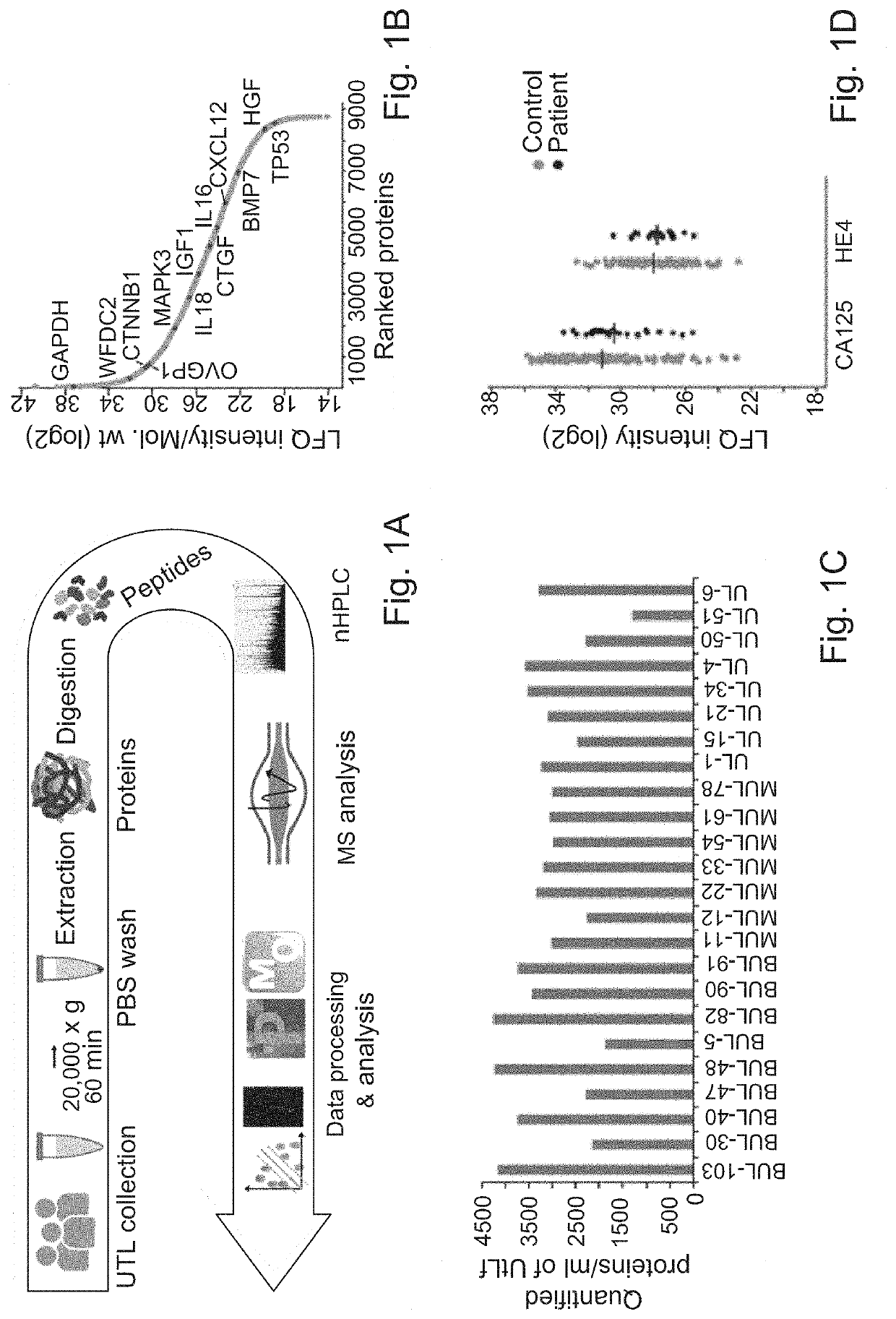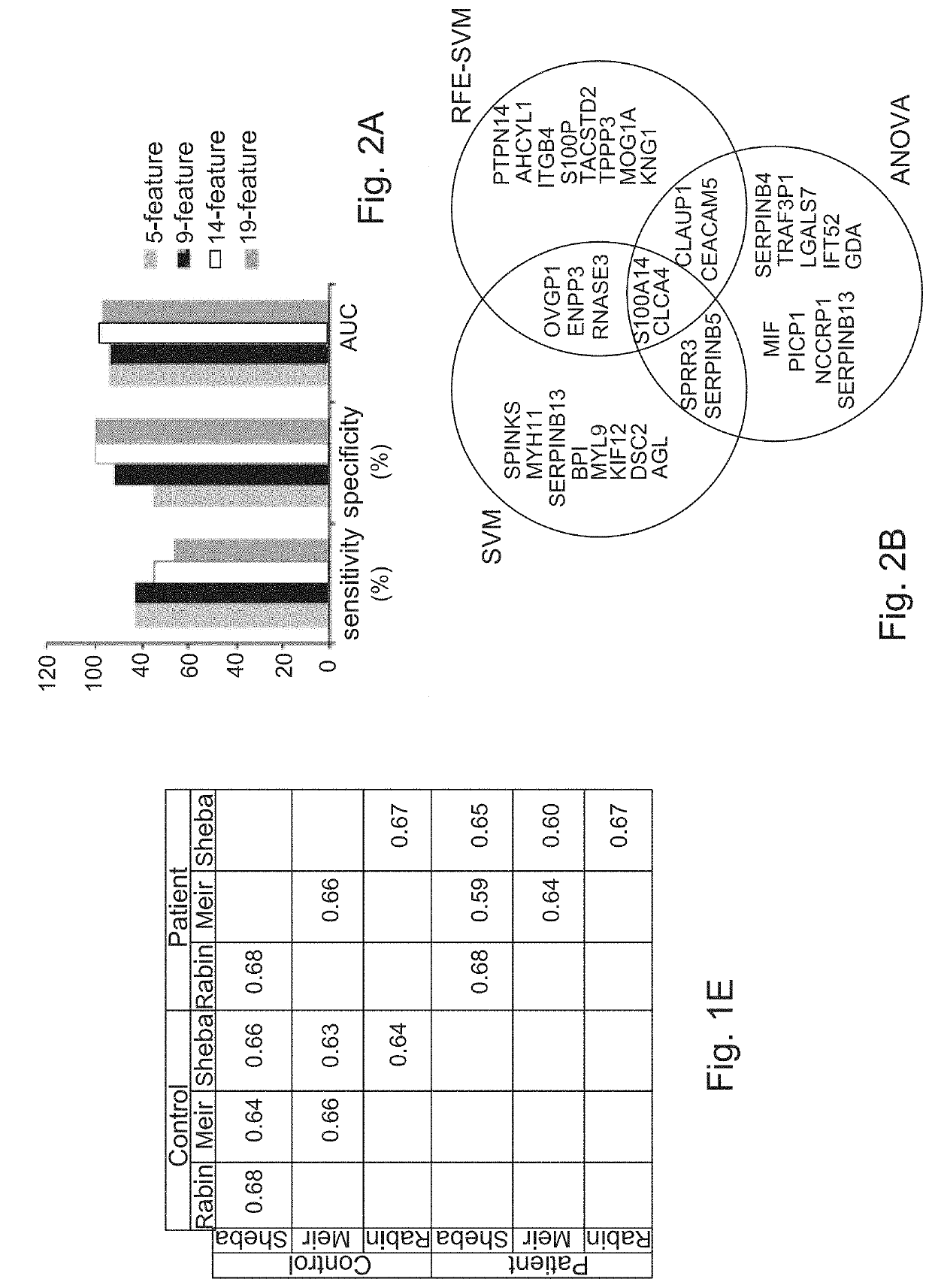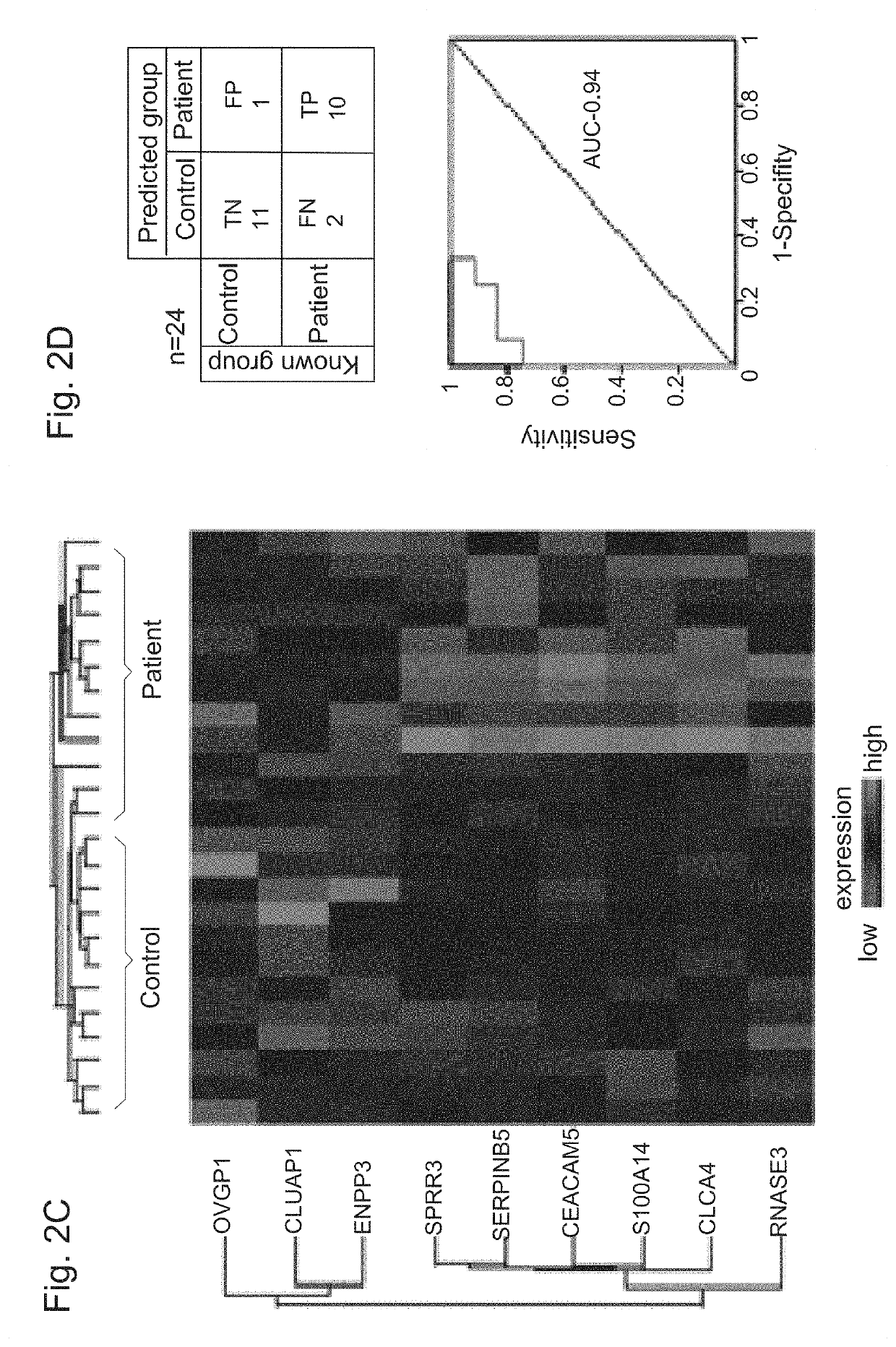Diagnostic methods and kits for early detection of ovarian cancer
a diagnostic method and ovarian cancer technology, applied in the field of cancer diagnosis, can solve the problems of ineffective screening programs and early detection, low sensitivity rate, and no effective improvement of survival
- Summary
- Abstract
- Description
- Claims
- Application Information
AI Technical Summary
Benefits of technology
Problems solved by technology
Method used
Image
Examples
example 1
[0392]Patients' Characteristics
[0393]Aiming to identify early-stage biomarkers for HGOC, it was hypothesized that “localized liquid biopsy” such as UtL sampling is likely to have better sensitivity and specificity than serum biomarkers. To that end, a set of 212 UtL samples from 208 enrolled donors was analyzed (Tables 1 and 2). Eleven samples were excluded due to missing data (n=1), inappropriate ovarian tumor histological subtype (n=8), or failing the quality control measures (n=2). The discovery set (n=24) consisted of UtL samples from 12 HGOC patients and 12 representative controls from all participating medical centers, while all subsequent samples were regarded as a validation set (n=152), and analyzed independently in a blinded manner. Overall, 49 UtL samples were obtained from HGOC patients (patient cohort', average age=61.8). Of those, 27 samples were obtained at primary debulking surgery and the other 22 were obtained at interval debulking surgery, after 3 cycles of platin...
example 2
[0394]UtL microvesicle Proteomic Profiling
[0395]In order to profile the proteome of a complex body fluid and detect potential diagnostic biomarkers, the challenge inflicted by the existence of highly abundant proteins had to be overcome. Therefore the previously developed method for microparticle isolation from plasma was examined for the application to UtL samples. Therefore, microvesicles were isolated from UtL by high speed centrifugation followed by PBS wash to remove albumin contamination. The microvesicles and their protein content were denatured with urea, followed by trypsin protein digestion and LC-MS / MS analysis as illustrated by the scheme of FIG. 1A. Analysis of the entire discovery cohort identified a total of 8578 UtLF microvesicle proteins and an average number 3000 per sample (range: 1500-4000) (FIG. 1C). Among the identified proteins, known FTE / HGOC proteins were found, such as MUC16 (CA125), WFDC2 (HE4), and OVGP1 (MUC9), as well as lower abundance proteins, includ...
example 3
[0396]Identification of Protein Signature
[0397]Next, the proteomic profiles of 24 patients and controls (discovery cohort') were used to construct a protein classifier for HGOC diagnosis. Support vector machine algorithm was used to classify the samples, and optimized the minimal number of features (proteins) that provide highest accuracy. For feature selection, 3 different algorithms were applied to the discovery cohort MS-datasets, SVM, RFE-SVM and ANOVA. The entire analytical workflow was embedded in a cross validation procedure to reduce over-fitting in order to identify a signature with a minimal number of proteins, a high predictive power, and a least dependence on the feature selection algorithm. The performance of several sets of top-ranked overlapping proteins, ranging in size from 5 to 19 features (FIG. 2A, 2B) was therefore examined. Optimal sensitivity, specificity, and area under the curve (AUC) of Receiver Operating Characteristic (ROC) curve of sensitivity vs. 1-speci...
PUM
| Property | Measurement | Unit |
|---|---|---|
| diameter | aaaaa | aaaaa |
| diameter | aaaaa | aaaaa |
| volume | aaaaa | aaaaa |
Abstract
Description
Claims
Application Information
 Login to View More
Login to View More - R&D
- Intellectual Property
- Life Sciences
- Materials
- Tech Scout
- Unparalleled Data Quality
- Higher Quality Content
- 60% Fewer Hallucinations
Browse by: Latest US Patents, China's latest patents, Technical Efficacy Thesaurus, Application Domain, Technology Topic, Popular Technical Reports.
© 2025 PatSnap. All rights reserved.Legal|Privacy policy|Modern Slavery Act Transparency Statement|Sitemap|About US| Contact US: help@patsnap.com



